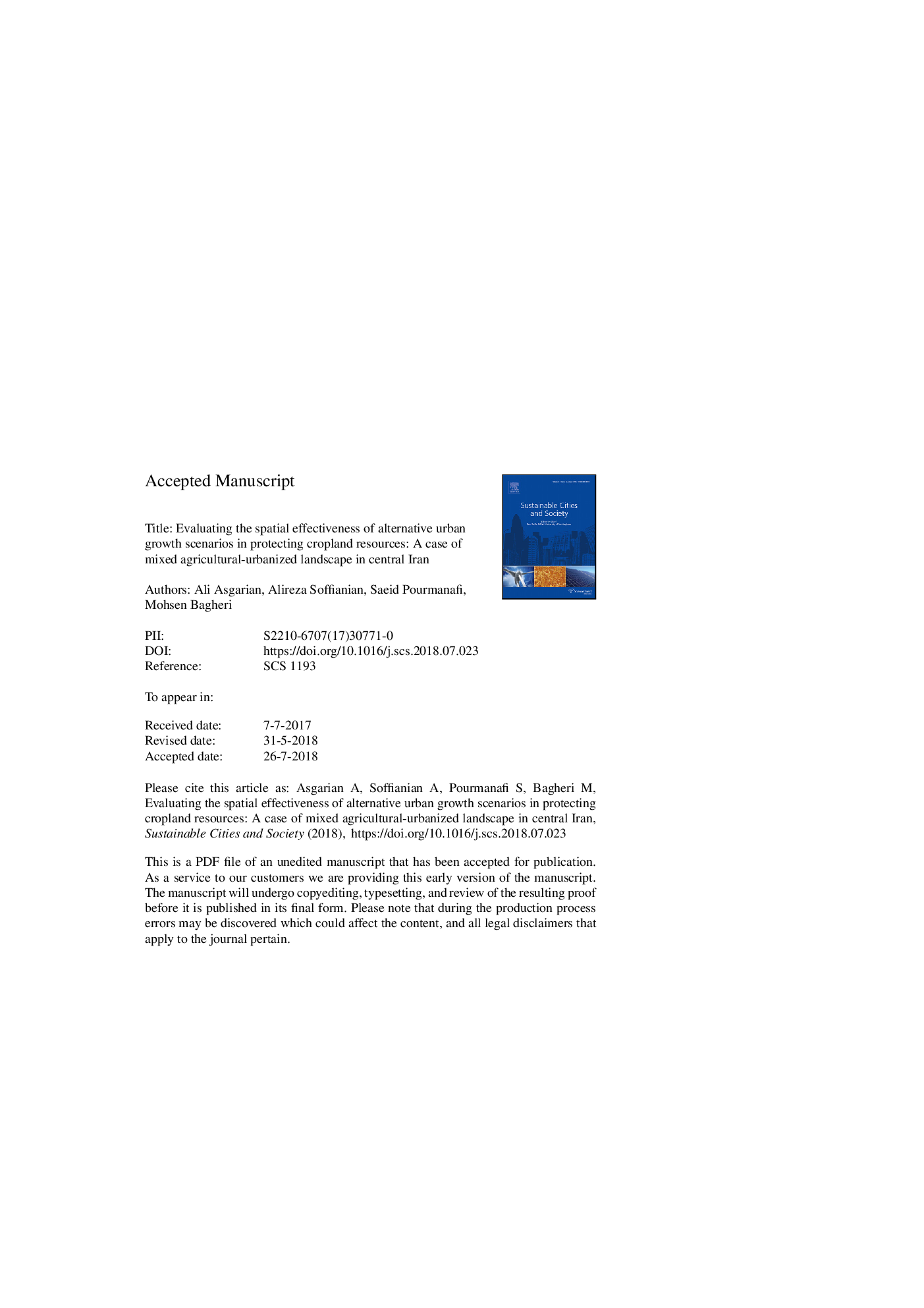| Article ID | Journal | Published Year | Pages | File Type |
|---|---|---|---|---|
| 10132160 | Sustainable Cities and Society | 2018 | 33 Pages |
Abstract
This study aimed to evaluate the effectiveness of a Land Resource Protection (LRP) strategy in protecting cropland resources in Najaf-Abad Hydrological Unit, central Iran. Towards this aim, the Historical Urban Growth (HUG) and LRP scenario maps were produced using the Multi-Criteria Evaluation (MCE) procedure and transplanted into the SLEUTH urban growth model, an acronym taken from Slope, Land use, Exclusion, Urban, Transportation, and Hill-shaded layers, to predict urban growth up to 2030, 2040, and 2050. Suitability of the land surface for crop production was also mapped using the MCE procedure. Maps derived from the SLEUTH and the cropland suitability analysis were overlaid to evaluate and compare the effect of HUG and LRP scenarios on loss of croplands with different suitability degrees. The results of this study showed that, by 2050, changes in the formation (from dispersive to organic pattern) and direction of urban growth under the LRP scenario will protect nearly 1000âha of cropland resources from conversion to urban areas and occupy statistically-less suitable croplands compared to HUG. Therefore, the formation and direction of the current urban growth trajectory should be modified towards an environmentally sound strategy as revealed in the LRP scenario.
Related Topics
Physical Sciences and Engineering
Energy
Renewable Energy, Sustainability and the Environment
Authors
Ali Asgarian, Alireza Soffianian, Saeid Pourmanafi, Mohsen Bagheri,
